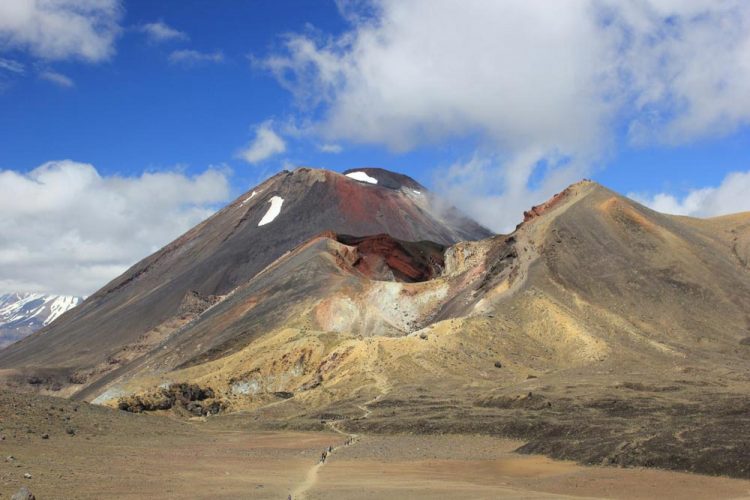Smaller, more frequent eruptions affect volcanic flare-ups

Eruption patterns in the Taupo Volcanic Zone provide insight into how super eruptions might work. Credit: Chad Deering/Michigan Tech
But why? A team of geoscientists went to New Zealand's North Island to dig into the answers and the white-gray rocks holding them. As explained in their findings, published this week in Science Advances, the team found that the flare-up of eruptions showed a pattern: The underlying magma body would erupt and reset over only decades to centuries in progressively shallower chambers close to the Earth's surface.
A better understanding of what governs this pattern can help with understanding supereruptions, which may be mitigated by smaller and more frequent eruptions. In addition, these results could aid with predictions of similar type eruptions through improved modeling down the road.
Vanderbilt University geoscientists led the team along with Michigan Technological University, University of Canterbury, Brown University, Princeton University, University of Lausanne, OFM Research-West and Woods Hole Oceanographic Institution. Chad Deering, an assistant professor of geology at Michigan Tech, studied the Taupo Volcanic Zone for his PhD and continues to do fieldwork in the area.
“This massive outpouring of magma essentially drains the magmatic system over a relatively short period of time,” Deering says. “However, following this activity, new magma rapidly ascends within the crust and primes it at shallow depths only to feed more large eruptions.”
The magma climbs the crustal ladder, so to speak, as it lodges in shallower and shallower chambers before erupting. The crust then warms and weakens, melting more of the surrounding crust, which enriches the magma with new minerals and water–a recipe for explosion.
The question that remains is: How long did it take for these crystal-rich magma bodies to assemble between eruptions? The study's lead researcher, Guilherme Gualda of Vanderbilt University, says it could be thousands of years, but may be even shorter.
“You have magma sitting there that's crystal-poor/melt-rich for a few decades, maybe 100 years, and then it erupts,” Gualda said. “Then another magma body is established, but we don't know how gradually that body assembles. It's a period in which you're increasing the amount of melt in the crust.”
It all comes down to timing. And better understanding the timeline and chemical make-up of the Taupo Volcanic Zone in New Zealand gives insight into how supereruptions build up in volcanoes around the world.
Media Contact
All latest news from the category: Earth Sciences
Earth Sciences (also referred to as Geosciences), which deals with basic issues surrounding our planet, plays a vital role in the area of energy and raw materials supply.
Earth Sciences comprises subjects such as geology, geography, geological informatics, paleontology, mineralogy, petrography, crystallography, geophysics, geodesy, glaciology, cartography, photogrammetry, meteorology and seismology, early-warning systems, earthquake research and polar research.
Newest articles

A ‘language’ for ML models to predict nanopore properties
A large number of 2D materials like graphene can have nanopores – small holes formed by missing atoms through which foreign substances can pass. The properties of these nanopores dictate many…

Clinically validated, wearable ultrasound patch
… for continuous blood pressure monitoring. A team of researchers at the University of California San Diego has developed a new and improved wearable ultrasound patch for continuous and noninvasive…

A new puzzle piece for string theory research
Dr. Ksenia Fedosova from the Cluster of Excellence Mathematics Münster, along with an international research team, has proven a conjecture in string theory that physicists had proposed regarding certain equations….



